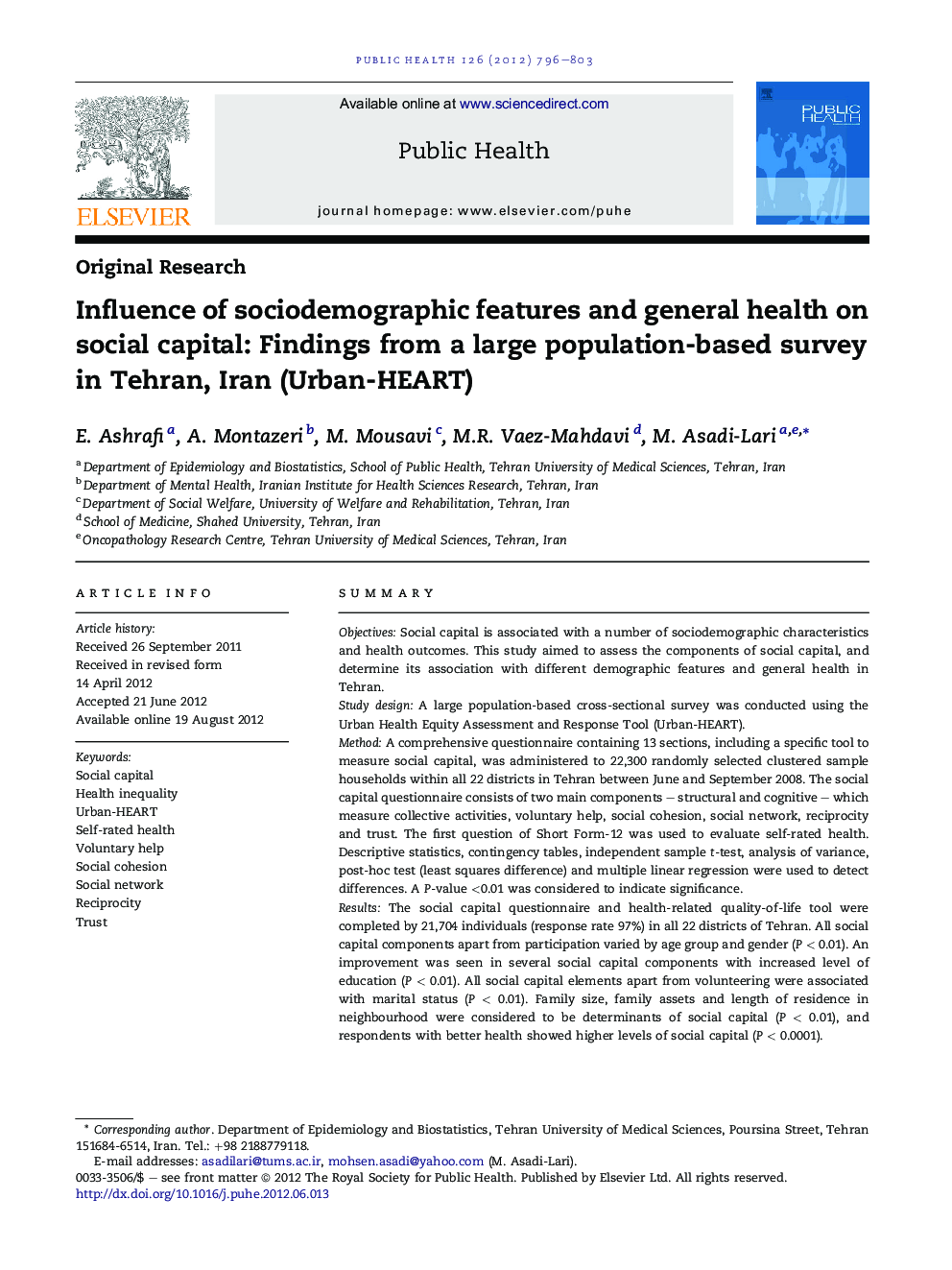| کد مقاله | کد نشریه | سال انتشار | مقاله انگلیسی | نسخه تمام متن |
|---|---|---|---|---|
| 1087757 | 951547 | 2012 | 8 صفحه PDF | دانلود رایگان |

SummaryObjectivesSocial capital is associated with a number of sociodemographic characteristics and health outcomes. This study aimed to assess the components of social capital, and determine its association with different demographic features and general health in Tehran.Study designA large population-based cross-sectional survey was conducted using the Urban Health Equity Assessment and Response Tool (Urban-HEART).MethodA comprehensive questionnaire containing 13 sections, including a specific tool to measure social capital, was administered to 22,300 randomly selected clustered sample households within all 22 districts in Tehran between June and September 2008. The social capital questionnaire consists of two main components – structural and cognitive – which measure collective activities, voluntary help, social cohesion, social network, reciprocity and trust. The first question of Short Form-12 was used to evaluate self-rated health. Descriptive statistics, contingency tables, independent sample t-test, analysis of variance, post-hoc test (least squares difference) and multiple linear regression were used to detect differences. A P-value <0.01 was considered to indicate significance.ResultsThe social capital questionnaire and health-related quality-of-life tool were completed by 21,704 individuals (response rate 97%) in all 22 districts of Tehran. All social capital components apart from participation varied by age group and gender (P < 0.01). An improvement was seen in several social capital components with increased level of education (P < 0.01). All social capital elements apart from volunteering were associated with marital status (P < 0.01). Family size, family assets and length of residence in neighbourhood were considered to be determinants of social capital (P < 0.01), and respondents with better health showed higher levels of social capital (P < 0.0001).ConclusionVarious individual and household characteristics influence social capital. General health and social capital are mutually and independently correlated with other determinants, so improvements in either may lead to higher levels of social capital and well-being.
Journal: Public Health - Volume 126, Issue 9, September 2012, Pages 796–803